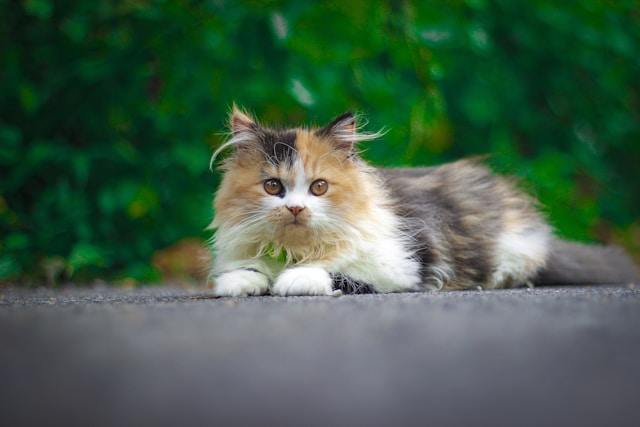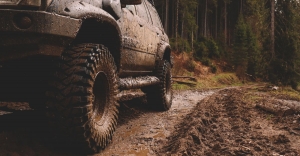Table of Contents
- The Power of Portraiture in Telling Animal Stories
- Animals in Cultural Art: A Timeless Presence
- Why People Relate to Animals in Photographs
- The Psychology of Pet Photography
- Modern Photography Exhibitions Featuring Animals
- Tips for Capturing Your Pet’s Personality on Camera
- Animal Photography as a Tool for Advocacy
The Power of Portraiture in Telling Animal Stories
The essence of strong portraiture lies in its capacity to capture more than just physical likeness—it brings to light emotion, character, and unspoken stories. Animal portraiture, in particular, offers a powerful way to communicate the individuality, energy, and charm of its subjects. Careful framing of a pet’s soulful eyes or a horse’s poised elegance invites viewers to perceive animals as sentient beings, each with a unique narrative. Artistic photography exhibitions often merge expressive imagery with thoughtful curation, drawing visitors into the world behind every face and wagging tail. Across the country, traveling exhibits and curated showcases frequently feature both domestic pets and wild species to broaden our appreciation for animal diversity. Venues ranging from local galleries to larger events sometimes highlight efforts from noteworthy organizations, such as Badlands Ranch, which contributes to the evolving conversation about the human-animal connection. When viewers pause before a striking animal portrait, they’re asked not just to look but to feel, creating an instant bond transcending artistic mediums.
One of the most effective approaches in animal portraiture is focusing on the eyes. Portraits that capture direct eye contact can evoke empathy and a sense of kinship. Such images are more than decorative; they represent shared moments and unspoken dialogue between people and animals. Hanging within homes and community spaces, the presence of animal portraiture brings atmosphere and warmth, serving as a daily reminder of the special relationships that humans share with their animal companions. With technology making it easier to snap and share these moments on a global scale, animal portraiture continues to blur boundaries, giving voice and visibility to creatures who have stories worth telling.
Animals in Cultural Art: A Timeless Presence
Animal imagery has been an inseparable part of human art for millennia, serving as a reflection of evolving beliefs, values, and aspirations across cultures and eras. From the earliest cave paintings, where wild horses, bulls, and lions were meticulously rendered, to medieval tapestries and Renaissance frescoes, animals have long symbolized attributes such as courage, wisdom, freedom, and loyalty. The legacy persists today, as contemporary artists utilize photography, sculpture, and digital media to cast animals in a variety of roles, sometimes as allegories for human emotion or as reminders of the natural world’s beauty and fragility. Modern art installations may juxtapose animal forms with urban backdrops or abstract elements, encouraging new interpretations of old motifs.
Contemporary photographers are now at the forefront of redefining how animal subjects are perceived in cultural art. Some focus on working animals, such as guide dogs or therapy cats, highlighting partnerships rooted in trust and service. Others capture candid moments of urban wildlife or tell the stories of stray animals coping within busy cities. By spotlighting these subjects in gallery spaces and public exhibits, artists remind viewers that the stories of animals—domesticated or wild—remain relevant, poignant, and powerful. These works encourage compassion and serve as gentle invitations to recognize the extraordinary within the ordinary.
Why People Relate to Animals in Photographs
The powerful impact of animal photography on human emotions is backed by research. Animal images are some of the most viewed and shared content online—and for good reason. Studies show that simply viewing pictures of dogs, cats, or wildlife can reduce stress, lower cortisol levels, and even improve productivity. This effect is linked to the brain’s release of oxytocin, a hormone associated with bonding and happiness. These responses are instinctive; humans are naturally wired to care for and empathize with animals, a tendency that finds joyful expression in the act of looking at animal images. According to The Guardian, the act of photographing animals—and our fascination with these images—stems from a deep desire to connect with the natural world and to capture emotional, often anthropomorphic, narratives in animal behavior.
People also tend to see pieces of themselves reflected in animal portraits. Whether it’s the impish tilt of a puppy’s head or the regal stance of a bird on a fencepost, animals can evoke a sense of shared experience. This phenomenon helps explain the ongoing popularity of animal-centric social media accounts, viral pet videos, and the rise of meme culture. When individuals spot kindred quirks, expressions, or emotions in animal photos, it affirms a common ground—bridging gaps of language, geography, or culture. In this way, animal images connect not just humans to animals but people to each other, fostering global communities built around admiration, humor, and empathy.
The Psychology of Pet Photography
On both personal and societal levels, photographing pets is an act rooted in affection and the creation of memories. Many pet owners report that capturing their animal companions in images helps them reinforce positive emotions and cope with challenges or separation. It’s not unusual for families to document both ordinary moments—lazy afternoons, silly faces, affectionate gestures—and significant milestones, like birthdays or first walks. The process of taking, sharing, and revisiting photos becomes a ritual that deepens connection, offering daily reminders of love and loyalty. Psychologists suggest that creating a visual record of life with pets can promote mental wellness, support emotional resilience, and even alleviate feelings of loneliness. For those who have lost a cherished animal, photographs become invaluable touchstones, preserving tangible reminders of time spent together.
Beyond the private realm, pet photography also plays a role in shaping public narratives about animals. Images of adopted pets finding new homes or formerly neglected animals thriving serve as powerful testimony, changing perceptions and inspiring others to welcome a pet into their lives. These visual stories become collective memories—a testament to the enduring place of animals within the human heart and home.
Modern Photography Exhibitions Featuring Animals
Global appreciation for animal-themed art is flourishing, with museums, galleries, and pop-up exhibitions putting creative animal imagery at center stage. These exhibitions may highlight a range of subjects and styles, from the studied elegance of formal portraits to spontaneous adventure caught on a smartphone. It’s not uncommon for contemporary shows to feature interactive displays, multimedia installations, or immersive virtual reality experiences that make animal photography accessible to broader audiences.
Traveling exhibits or city-based festivals dedicated to animal photography provide inspiration as well as education, using powerful visuals to raise awareness about pressing issues such as conservation or humane treatment. The storytelling inherent in these images encourages thoughtful engagement and discussion—whether a viewer pauses before a portrait of a senior dog or contemplates the fragility of the natural world in dramatic wildlife scenes. Innovative technologies and social media platforms have further expanded the reach and relevance of animal exhibitions, enabling art lovers and advocates to connect and share ideas worldwide.
Tips for Capturing Your Pet’s Personality on Camera
- Choose natural light: Shooting outdoors or by a window enhances your pet’s natural colors and avoids harsh shadows or red eye from flashes. Bright, even lighting brings out fur detail and highlights expressive eyes.
- Shoot at eye level: Getting low to the ground helps to capture a more intimate perspective. Meeting your pet’s gaze can reveal a playful streak, bashful grin, or regal composure that sets them apart.
- Let pets settle: Give your animal time to relax or explore before starting the photo session. After a few minutes, many pets transition from anxious to at ease, showing off their true selves.
- Engage with toys or treats: Favorite items inspire lively reactions—a wagging tail, a pounce, or attentive ears. These candid actions create portraiture that feels spontaneous and genuine.
- Take lots of pictures: Since animals move quickly, multiple shots in succession increase your odds of nabbing the perfect moment. Experiment with different angles and distances; sometimes, the most endearing shot is the one that wasn’t planned.
Remember, every pet is unique, so experimentation and patience are key. Experiment with different techniques to find what most authentically captures your animal companion’s spirit and antics.
Animal Photography as a Tool for Advocacy
Beyond personal connection, animal imagery plays a central role in activism and education. Photos featuring animals in need, shelters, or their natural habitats often contain calls to action—urging viewers to donate, adopt, or take action to protect. From iconic images of endangered wildlife to portraits of rescue animals available for adoption, compelling photography raises awareness and mobilizes communities. Animal rescue organizations regularly report measurable improvements in adoption rates after sharing heartwarming or dramatic photos of their residents. These stories told through powerful visuals, foster empathy, drive donations, and sometimes even influence policy changes.
Animal photography also plays a crucial role in conservation work and legislative advocacy. Documenting the realities of habitat encroachment, poaching, or climate change can move stakeholders to take meaningful action. By lending animals a visual platform, photographers give a voice to those who cannot speak for themselves, galvanizing audiences to protect and defend the world’s most vulnerable creatures.






